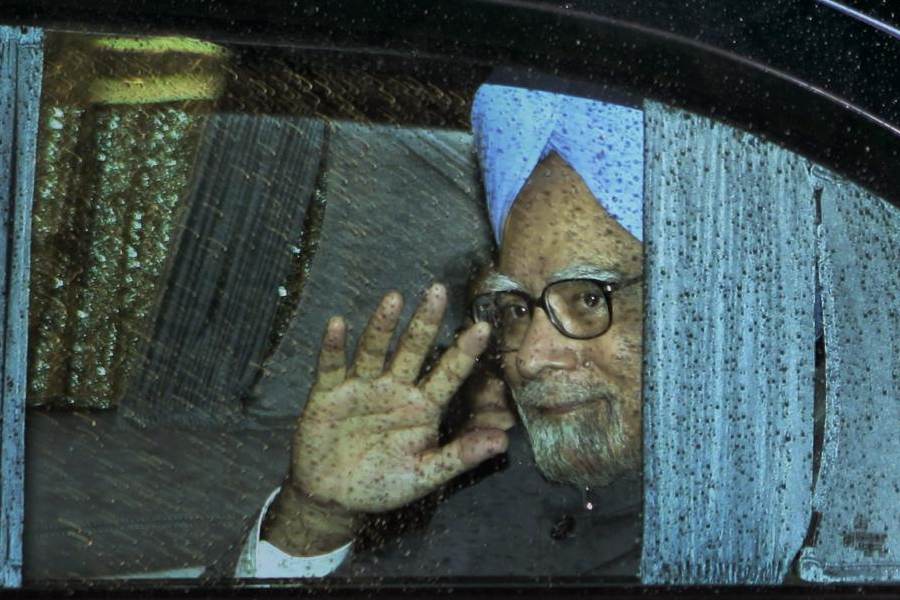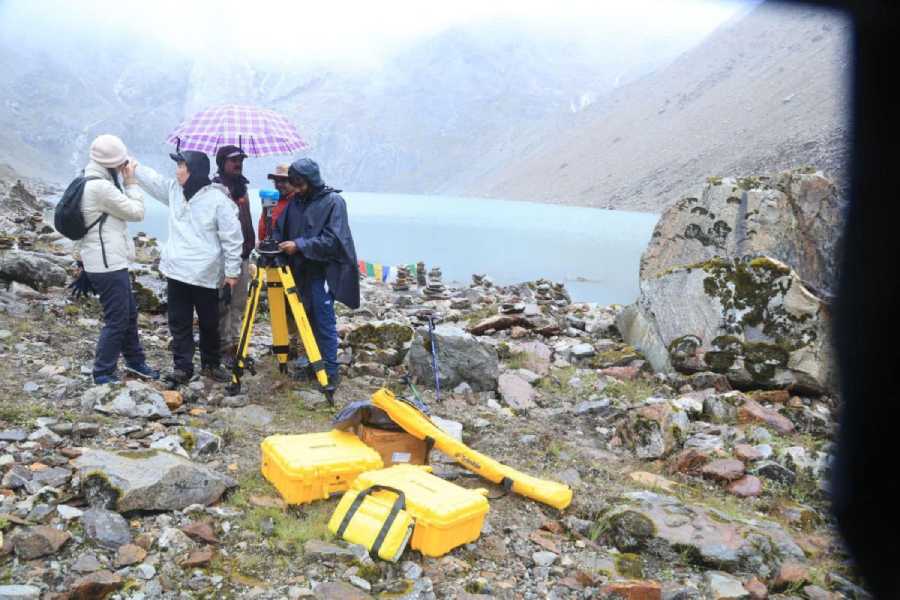Glued to a smartphone on Monday, a couple of junior doctors who were sitting on a cot at the protest site outside Swasthya Bhavan quipped around 6.35pm: “Ebar kichhu akta hobey (Something will happen now)”.
Something happened, almost five hours later. Around 11.55pm, chief minister Mamata Banerjee announced: “There will be a new CP after 4pm tomorrow (Tuesday)”.
A deafening roar greeted the announcement. The protesting doctors, who have been camping outside the health department headquarters since last Tuesday, started dancing.
After the announcements, conch shells were being blown with renewed vigour. The dhaak beats found a new rhythm.
Slogans shot past the roofs of the makeshift camps.
“So andolan e jitlo ke (So who won in the revolution)?” asked a voice.
Many voices roared back in cohesion: “Aam janata abar ke (The common people, who else)”.
The first visuals of the delegation of doctors entering the chief minister’s Kalighat home emerged around 6.35pm. A sense of hope, of the 39-day stalemate finally coming to an end, was palpable for the rest of the night.
“Despite differences, both sides have shown flexibility. We are hopeful of a solution,” said a junior doctor.
The anticipation started building after visuals showed the delegation leaving Kalighat around 11.45pm.
For the five hours that the meeting lasted, many doctors were glued to their phones.
Just before 9pm, as soon as the channels started showing that the meeting was over, a flurry of activities started. Many doctors at the site started making phone calls. But preparation of the minutes of the meeting took almost three hours more.
At least two junior doctors, part of a group of protesters from Medical College and Hospital, Kolkata, were among those walking up and down with phones stuck to their ears around 9.15pm.
“The call is not going through,” said one of them. Another doctor replied: “Must be because they had to deposit their phones before entering the meeting.”
Throughout Monday, the mood of the protesting junior doctors swung from anticipation to hope as the government extended an olive branch.
Bengal’s chief secretary, Manoj Pant, sent an email to the West Bengal Junior Doctors Front (WBJDF) at 11.48am, reaching out to them for a meeting between the chief minister and their representatives.
A flurry of mails were exchanged between the two parties until early evening.
Around 4.30pm, a bus arrived at the spot, suggesting that the meeting would eventually happen. At 5.10pm, the representatives of the WBJDF started moving towards the bus, parked at the Techno India intersection. The bus left for Kalighat around 5.45pm. Cheers and slogans of “We want justice” rang out.
Before leaving, the junior doctors who addressed the gathering said they will ask the authorities to either allow them to record the proceedings, hand them a copy of the video immediately after the meeting or to let the stenographers hired by them record the minutes of the meeting.
The announcement was met with huge cheers from the crowd.
Once the bus left, many who were shouting slogans or singing songs settled in on cots and makeshift wooden structures to watch news channels in groups.
“We are all waiting for a positive outcome of the meeting. The authorities must understand that we are not out on the streets for nothing. We are shaken and shocked but are firm on our resolve. We want justice for the young doctors who was raped and murdered inside RG Kar Medical College and Hospital but also want everyone who is involved in the cover-up and evidence tampering to be punished,” said Anubhav Mondal, an intern at RG Kar.
As the visuals of the junior doctors entering the chief minister’s house played out, most doctors started following news channels.
Some, however, continued to shout slogans: “Ek hoyeche hajar gola bhoy peyeche choddo tola (A thousand voices have come together, the 14th floor is scared); Aarji noy daabi kor justice for RG Kar (don’t appeal, demand justice for RG Kar)”.
The protest site looked like a fairground throughout the day.
Many women had come with conch shells that they blew frequently. Many others would be ululating every time they were blown.
Makeshift tea and coffee stalls remained busy.
A middle-aged man came with his son. “He wants to paint something on the road or a wall in solidarity with the protest. Is there a place where he can do so?” he asked.
Some doctors pointed to the road leading to the office of the Nabadiganta Industrial Township Authority, already a canvas for protest slogans and paintings.











